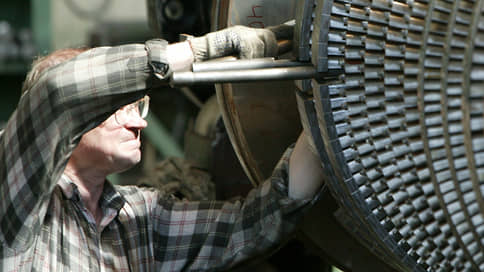“Gazprom” turns the turbines
[ad_1]

According to Kommersant, for the LNG plant in Ust-Luga, Ruskhimallyans (50% each from Gazprom and Rusgazdobycha) can purchase Russian GTD-110M turbines. These machines will be installed instead of Japanese gas turbines by Mitsubishi Heavy Industries, which refused to fulfill the contract. Compressors for the project, which were also supposed to be supplied by the Japanese, can be ordered from Kazankompressormash. Changing the composition of critical equipment to Russian, according to experts, could delay the launch of the project by 12-15 months, and the lower maneuverability of the GTD-110M could negatively affect LNG production.
Rushimalliance is considering the purchase of three GTD-110M gas turbines (one of them is a reserve one) from the United Engine Corporation (UEC, part of Rostec) for its LNG plant in Ust-Luga, Kommersant sources familiar with the situation say.
These machines should replace the H100 gas turbines with a capacity of about 120 MW of the Japanese Mitsubishi Heavy Industries (MHI), which, according to Kommersant’s interlocutors, refused to supply amid sanctions.
A final decision has not been made, negotiations are still underway, one of Kommersant’s interlocutors clarified. The change in the composition of the equipment will delay the launch of the LNG plant in Ust-Luga, two Kommersant sources say.
Rushimalliance plans to build an integrated gas processing and liquefaction plant in Ust-Luga. The source of raw materials for the project was to be the old fields of Western Siberia, where a large amount of ethane-containing (wet) gas is produced. As a result of its processing, it is planned to produce up to 4 million tons of ethane and 2.2 million tons of liquefied hydrocarbon gases per year.
Most of the methane will be liquefied, with two lines planned to produce 13 million tons of LNG per year. In October 2021, the company announced that there would be a third line for 6.5 million tons. The first line was supposed to be launched at the end of 2024, the second – in 2025, the third line, according to Kommersant, – in 2026.
The implementation of LNG projects in the Russian Federation is hampered by the imposition of EU sanctions prohibiting the supply of key equipment for large-tonnage liquefaction. In the case of the plant in Ust-Luga, the German Linde was responsible for the supply as an EPC contractor, the company signed a contract with MHI at the end of 2021 for four H100 gas turbines and ten centrifugal compressors. As Kommersant reported on June 21, 2022, after the outbreak of hostilities in Ukraine, Linde refused to fulfill the contract.
Now compressors are planned to be ordered from Kazankompressormash. But there are no machines for the GTD-110M in the manufacturer’s lineup, more powerful compressors need to be developed, two Kommersant sources say, without specifying how long it will take.
Gazprom declined to comment, and the State Migration Service did not respond to Kommersant’s request. Rostec reported that there were no contracts yet, so there was “nothing to comment on.” But they emphasized that the GTD-110M is the only domestic high-power turbine that “passed all the tests, exists” in hardware “and is ready for serial deliveries.” GTD-110M is not yet widely used on the market. Its development resumed in 2013, but the previous sample collapsed during testing in 2018. On January 18, Rostec announced that it had completed the production of the first serial turbine. The new model has been tested at Inter RAO’s Ivanovskiye CCGTs, and then it is planned to be installed at Rostec’s Udarnaya TPP in the Krasnodar Territory. From 2024, the UEC wants to produce two turbines a year, capacities have already been reserved for three machines for the Novocherkasskaya GRES of Gazprom Energoholding. Rostec believes that the machine should become the basis for the modernization of old thermal power plants.
Changing the pool of suppliers means making major changes to the project documentation, it will take a lot of time and, of course, re-passing the state expertise, says Sergei Kondratiev from the Institute of Energy and Finance. This, he estimates, could lead to a delay of 12-15 months. Based on the fact that the original project involved the construction of two lines of an LNG plant with the installation of two H100 GTUs with a capacity of 115 MW for each stage, and now Rushimalliance is replacing them with turbines of a similar capacity, it can be concluded that Gazprom is ordering equipment only for the first turn of the LNG plant, adds Mr. Kondratiev.
Independent expert Yuri Melnikov believes that the GTD-110M turbine cannot be called a full-fledged replacement for the H100 MHI, which has been in commercial operation since 2010.
He notes that the H100 is a twin-shaft turbine (two-shaft design gives greater maneuverability of the turbine), ready for operation as a mechanical drive, including in large LNG plants at 4-6 million tons per year. GTD-110M is a single-shaft machine, which was originally created only for work as part of power plants. For example, the rotor of a single-shaft turbine for power plants rotates at a constant speed of 3 thousand revolutions per minute.
“This is not a case for a mechanical drive at all – it needs a wide range of frequency control by definition,” the expert explains. It is theoretically possible to use the GTD-110M to drive compressors, he clarifies, but “it is difficult to assess the risks of such a decision.”
[ad_2]
Source link





